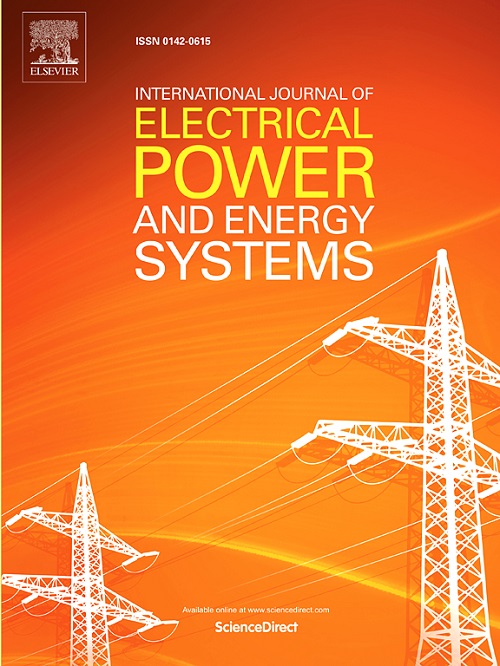Unified Loadability Quality Factor (ULQF): A bounded and interpretable voltage stability index
IF 5
2区 工程技术
Q1 ENGINEERING, ELECTRICAL & ELECTRONIC
International Journal of Electrical Power & Energy Systems
Pub Date : 2025-09-24
DOI:10.1016/j.ijepes.2025.111175
引用次数: 0
Abstract
Voltage stability assessment remains a critical challenge in evolving power networks, which are increasingly influenced by load variability, renewable energy integration, and distributed energy resources. Traditional indices such as the Loadability Quality Power (LQP) index exhibit significant limitations under stressed or complex conditions, frequently producing unbounded or misleading values. To address these shortcomings, this paper introduces the Unified Loadability Quality Factor (ULQF). This normalized and bounded voltage stability index quantifies line stress on a [0, 1] scale, offering improved interpretability and consistency for steady-state security assessment. ULQF incorporates a dynamic normalization framework that accounts for real and reactive capacity margins, ensuring applicability across both radial and meshed topologies. Its performance is validated on four benchmark systems, Garver 6-bus, IEEE 14, 30, and 118-bus, across more than 160,000 load scenarios, including nodal overloading, contingency stress testing, Monte Carlo uncertainty analysis, and comparisons against classical indices such as FVSI and L- index. Results show that ULQF reliably tracks proximity to voltage collapse and aligns with PV curve behavior, outperforming existing methods under conditions of congestion and increased demand. Its lightweight computational design and compatibility with SCADA measurements highlight its potential for practical integration into control-center workflows. While this study focuses on classical benchmark networks, future work will extend the framework to converter- dominated and renewable-rich systems, further supporting resilience and reliability in evolving power grids.
统一负载质量因子(ULQF):一个有界的、可解释的电压稳定性指标
随着负荷变异性、可再生能源整合和分布式能源的影响越来越大,电压稳定性评估仍然是不断发展的电网面临的一个关键挑战。传统的指标,如负载质量功率(LQP)指标在应力或复杂条件下表现出明显的局限性,经常产生无界或误导性的值。针对这些不足,本文引入了统一负载质量因子(ULQF)。这种归一化和有界的电压稳定指标在[0,1]尺度上量化了线路应力,为稳态安全评估提供了更好的可解释性和一致性。ULQF结合了一个动态规范化框架,该框架考虑了实际和无功容量余量,确保了径向和网状拓扑的适用性。它的性能在Garver 6总线、IEEE 14、30和118总线四个基准系统上进行了验证,在超过16万个负载场景中进行了验证,包括节点过载、应急压力测试、蒙特卡罗不确定性分析,以及与经典指数(如FVSI和L- index)的比较。结果表明,ULQF可靠地跟踪电压崩溃的接近程度,并与PV曲线行为保持一致,在拥塞和需求增加的情况下优于现有方法。它的轻量级计算设计和与SCADA测量的兼容性突出了它在实际集成到控制中心工作流程中的潜力。虽然本研究侧重于经典基准网络,但未来的工作将把框架扩展到以变流器为主导和富含可再生能源的系统,进一步支持不断发展的电网的弹性和可靠性。
本文章由计算机程序翻译,如有差异,请以英文原文为准。
求助全文
约1分钟内获得全文
求助全文
来源期刊
CiteScore
12.10
自引率
17.30%
发文量
1022
审稿时长
51 days
期刊介绍:
The journal covers theoretical developments in electrical power and energy systems and their applications. The coverage embraces: generation and network planning; reliability; long and short term operation; expert systems; neural networks; object oriented systems; system control centres; database and information systems; stock and parameter estimation; system security and adequacy; network theory, modelling and computation; small and large system dynamics; dynamic model identification; on-line control including load and switching control; protection; distribution systems; energy economics; impact of non-conventional systems; and man-machine interfaces.
As well as original research papers, the journal publishes short contributions, book reviews and conference reports. All papers are peer-reviewed by at least two referees.

 求助内容:
求助内容: 应助结果提醒方式:
应助结果提醒方式:


